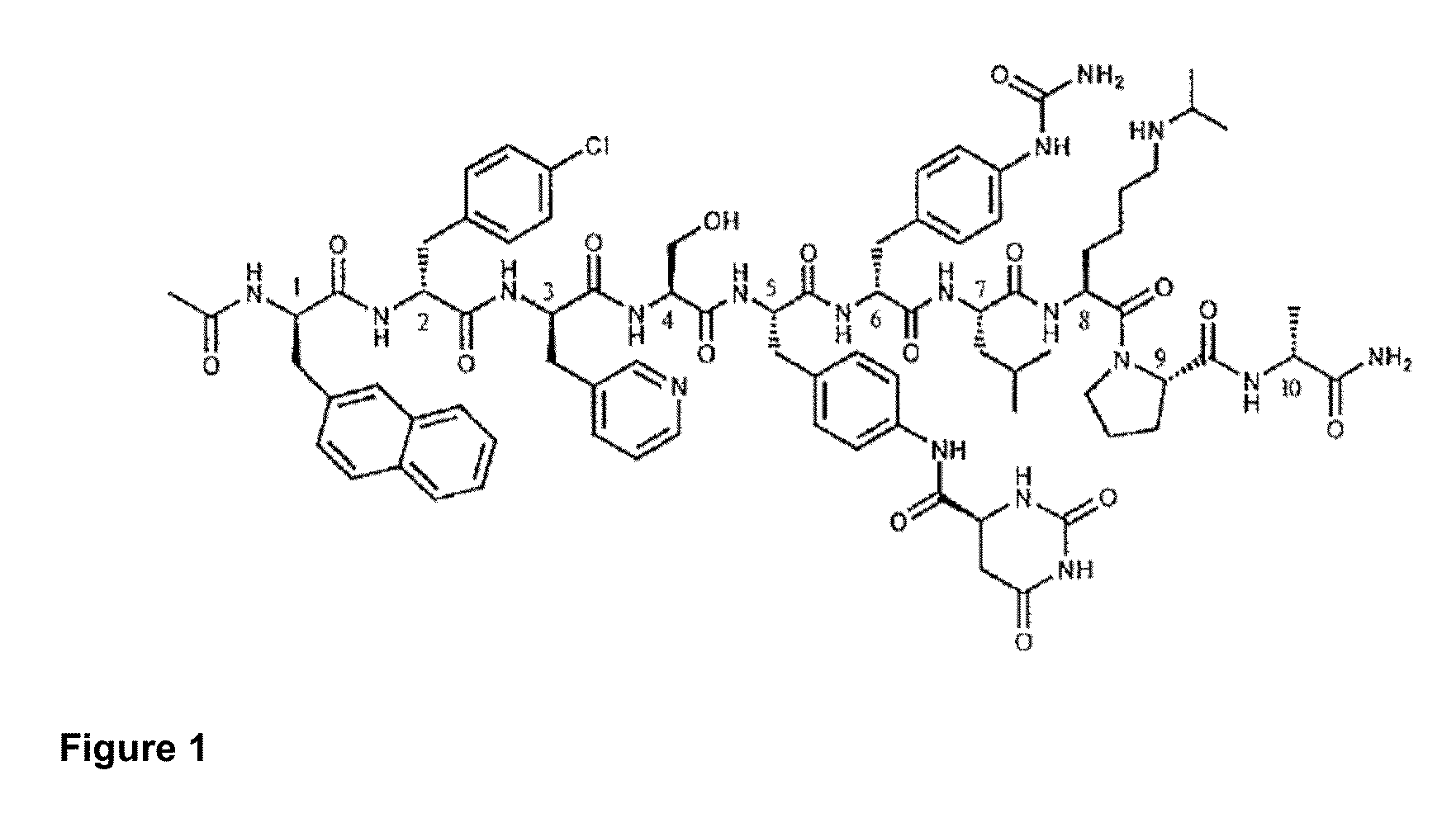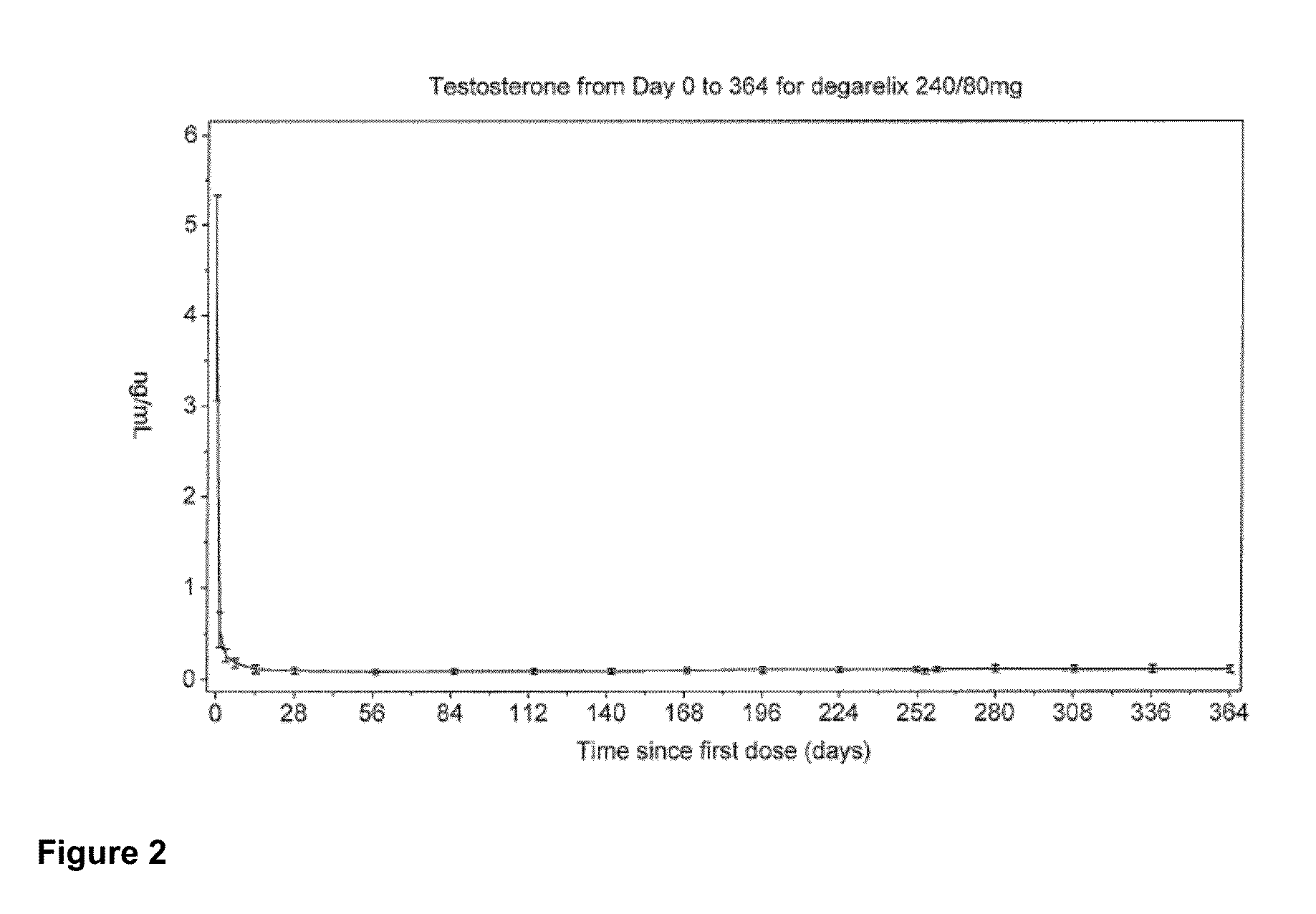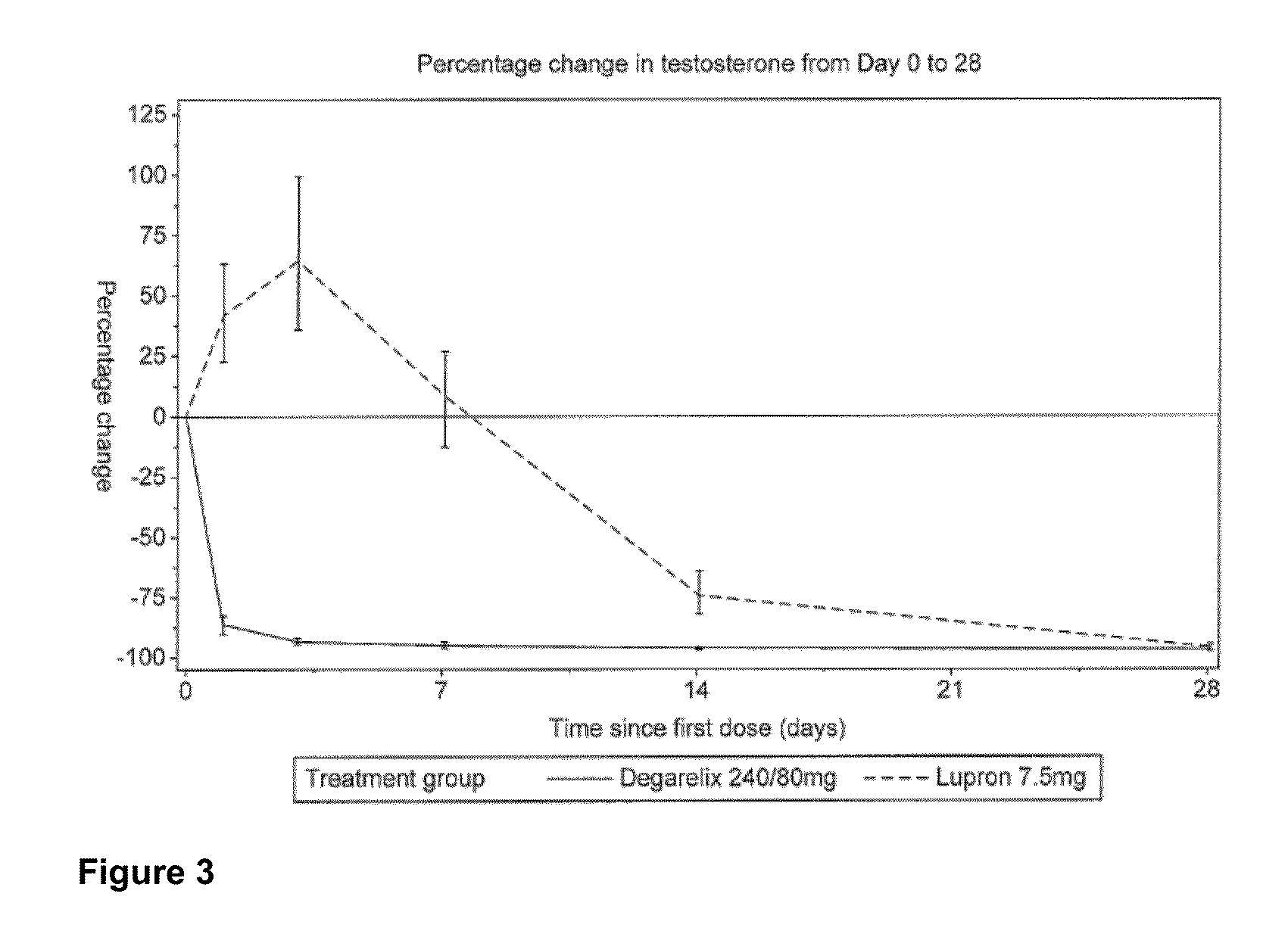METHOD OF TREATING PROSTATE CANCER WITH GnRH ANTAGONIST
a prostate cancer and anti-cancer technology, applied in the direction of peptides, drug compositions, peptides, etc., can solve the problems of serious hepatic and gastrointestinal side effects, use of anti-androgens, and further worsening the condition, so as to reduce the likelihood of developing
- Summary
- Abstract
- Description
- Claims
- Application Information
AI Technical Summary
Benefits of technology
Problems solved by technology
Method used
Image
Examples
example 1
Clinical Study of Degarelix for the Treatment of Prostate Cancer
[0116]In this example, an open-label, multi-center, randomized, parallel-group study was conducted to investigate the efficacy and safety of degarelix one month dosing regimens. Patients in two degarelix treatment groups received a degarelix starting dose of 240 mg at a concentration of 40 mg / mL followed by either of two different once-a-month dosing regimens, 160 mg (40 mg / mL) and 80 mg (20 mg / mL). These degarelix dosing regimens were compared to LUPRON DEPOT™ at 7.5 mg in patients with prostate cancer requiring androgen ablation therapy.
[0117]The study also investigated whether degarelix is safe and effective with respect to achieving and maintaining testosterone suppression to castrate levels, evaluated as the proportion of patients with testosterone suppression ≦0.5 ng / mL during 12 months of treatment, and compared serum levels of testosterone and prostate-specific antigen (PSA) using a degarelix dosing regimen vers...
example 2
Clinical Study Comparing Cardiovascular Event Rates using GnRH Antagonist versus Agonist
[0245]In this example, a study was conducted to investigate the risk of cardiovascular events when ADT is utilized by a GnRH antagonist versus agonist in patients with or without a history of cardiovascular events.
[0246]Specifically, this study utilized available data yielding a safety database of 2328 PCa (prostate cancer) patients who participated in randomized clinical trials and received treatment with either degarelix or a GnRH agonist for up to 12 months (13 treatment months). Justification for performing the comparison over this relatively short treatment period comes from numerous observations indicating that the increased risk of cardiovascular (CV) morbidities associated with the use of GnRH agonists was detectable during the first 12 months of treatment (Saigal et al. (2007) Cancer 110:1493-500) and as early as after 1-4-month (Keating et al. (2006) J. Clin. Oncol. 24:4448-56) or 6-mon...
PUM
| Property | Measurement | Unit |
|---|---|---|
| blood pressure | aaaaa | aaaaa |
| pH | aaaaa | aaaaa |
| density | aaaaa | aaaaa |
Abstract
Description
Claims
Application Information
 Login to View More
Login to View More - R&D
- Intellectual Property
- Life Sciences
- Materials
- Tech Scout
- Unparalleled Data Quality
- Higher Quality Content
- 60% Fewer Hallucinations
Browse by: Latest US Patents, China's latest patents, Technical Efficacy Thesaurus, Application Domain, Technology Topic, Popular Technical Reports.
© 2025 PatSnap. All rights reserved.Legal|Privacy policy|Modern Slavery Act Transparency Statement|Sitemap|About US| Contact US: help@patsnap.com



